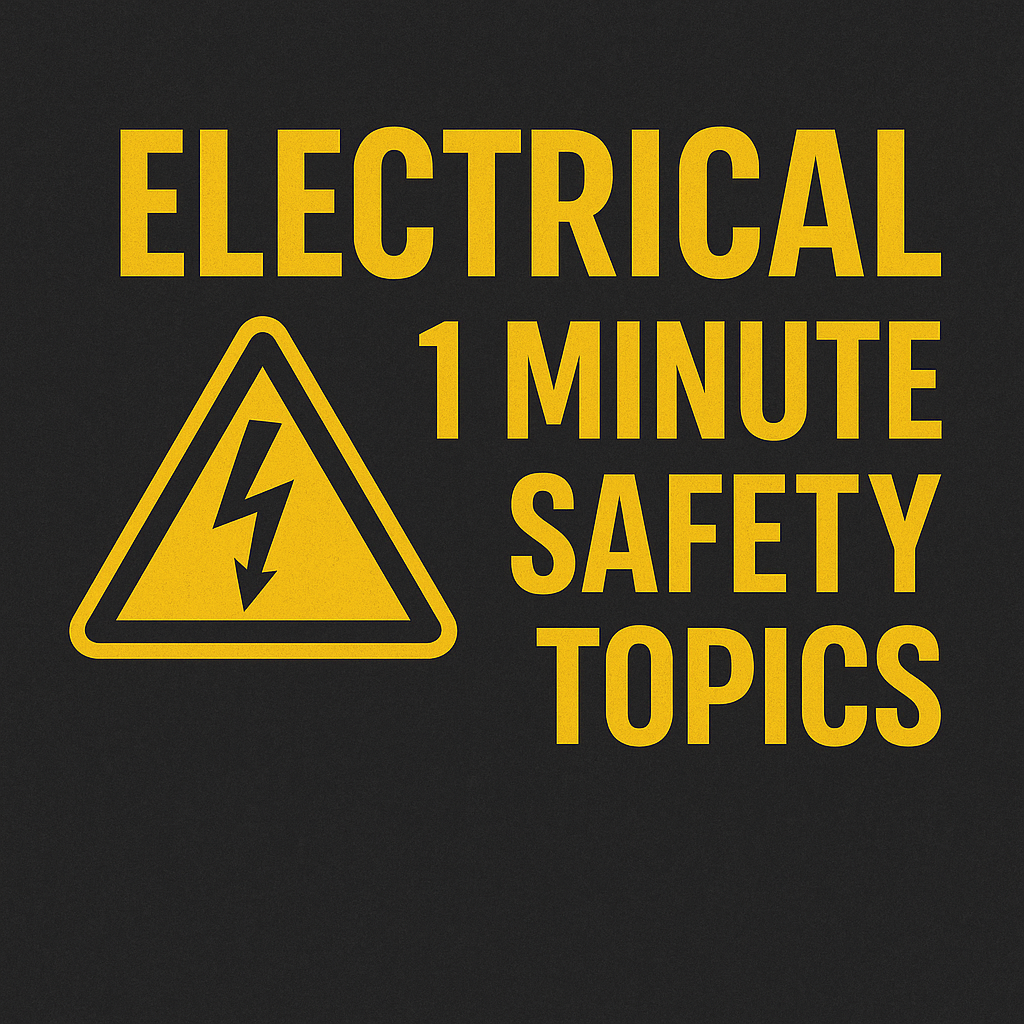
Electrical 1 Minute Safety Topics
Electricity is powerful—and dangerous when mishandled. Even a small shock can lead to burns, heart failure, or death. That’s why 1-minute electrical safety talks are so effective. They provide fast, focused reminders before the shift begins.
What Are 1-Minute Safety Topics?
They’re quick safety messages designed to refresh workers’ memory about a single hazard. Instead of lengthy training, these are simple reminders that can save lives.
Why Electrical Safety Requires Attention
Electrical hazards are often invisible but deadly. From arc flashes to contact with live wires, workers face serious risks daily. Electrical incidents are a leading cause of fatalities in construction and industry.
Benefits of 1-Minute Electrical Talks
- Keep hazards fresh in workers’ minds
- Promote safe work practices daily
- Encourage active participation and vigilance
Top 10 Electrical 1-Minute Safety Topics
Here are the most practical reminders for preventing electrical accidents.
Topic 1: Lockout/Tagout (LOTO)
Always de-energize and lock equipment before maintenance. Reminder: “If it’s not locked out, don’t touch it.”
Topic 2: Inspecting Tools and Cords
Check for frayed wires, cracked insulation, or exposed conductors. Never use damaged tools.
Topic 3: Dry Hands and Work Area
Water and electricity don’t mix. Make sure hands, gloves, and the work surface are dry.
Topic 4: Overhead Power Lines
Maintain a safe clearance when using cranes or ladders. Assume lines are live unless proven otherwise.
Topic 5: Grounding and Bonding
Proper grounding prevents electrocution. Always verify that tools and panels are grounded.
Topic 6: Personal Protective Equipment (PPE)
Use insulated gloves, rubber mats, and arc-rated PPE for high-voltage tasks.
Topic 7: Avoiding Overloading Circuits
Plugging too many devices into one outlet can cause overheating and fires.
Topic 8: Proper Use of Extension Cords
Use only for temporary power. Never run cords under carpets or through doorways.
Topic 9: Emergency Response to Shocks
If someone is electrocuted, don’t touch them directly. Cut power first, then call for help.
Topic 10: Awareness of Arc Flash Hazards
Arc flashes release extreme heat and pressure. Always respect arc flash boundaries.
How to Deliver Electrical Talks Effectively
- Speak clearly and keep it under 60 seconds
- Use real-life incidents as examples
- Involve workers with quick questions like: “What’s the first step before electrical repair?”
Mistakes to Avoid
- Using too much technical jargon
- Talking too long and losing focus
- Failing to follow up with actual safe practices
Conclusion
Electrical work is unforgiving. A 1-minute talk may seem small, but it can prevent shocks, burns, and fatalities. Think of it as a safety switch for the mind—turning awareness on before the job begins.
FAQs
1. What is the most common electrical hazard?
Exposed wires and contact with live equipment.
2. How often should electrical safety talks be given?
Daily, especially before high-risk tasks.
3. Can anyone deliver these talks?
Yes, supervisors, safety officers, or even workers can rotate delivery.
4. What PPE is required for electrical work?
Insulated gloves, safety shoes, arc-rated clothing, and face shields.
5. What is the first step if someone gets an electric shock?
Disconnect the power source before touching them, then call emergency services.